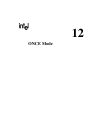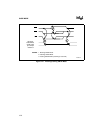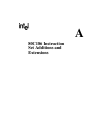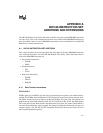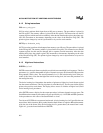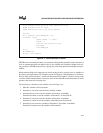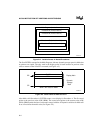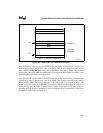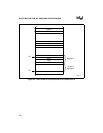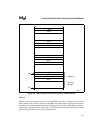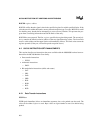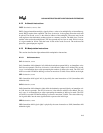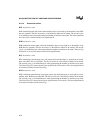
A-3
80C186 INSTRUCTION SET ADDITIONS AND EXTENSIONS
Figure A-1. Formal Definition of ENTER
ENTER treats a reentrant procedure as a procedure calling another procedure at the same lexical
level. A reentrant procedure can address only its own variables and variables of higher-level call-
ing procedures. ENTER ensures this by copying only stack frame pointers from higher-level pro-
cedures.
Block-structured high-level languages use lexical nesting levels to control access to variables of
previously nested procedures. For example, assume for Figure A-2 that Procedure A calls Proce-
dure B, which calls Procedure C, which calls Procedure D. Procedure C will have access to the
variables of Main and Procedure A, but not to those of Procedure B because Procedures C and B
operate at the same lexical nesting level.
The following is a summary of the variable access for Figure A-2.
1. Main has variables at fixed locations.
2. Procedure A can access only the fixed variables of Main.
3. Procedure B can access only the variables of Procedure A and Main.
Procedure B cannot access the variables of Procedure C or Procedure D.
4. Procedure C can access only the variables of Procedure A and Main.
Procedure C cannot access the variables of Procedure B or Procedure D.
5. Procedure D can access the variables of Procedure C, Procedure A and Main.
Procedure D cannot access the variables of Procedure B.
The following listing gives the formal definition of the
ENTER instruction for all cases.
LEVEL denotes the value of the second operand.
Push BP
Set a temporary value FRAME_PTR: = SP
If LEVEL > 0 then
Repeat (LEVEL - 1) times:
BP:=BP - 2
Push the word pointed to by BP
End Repeat
Push FRAME_PTR
End if
BP:=FRAME_PTR
SP:=SP - first operand



